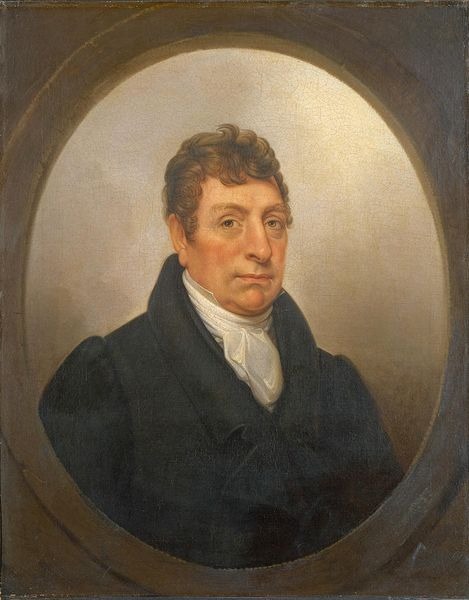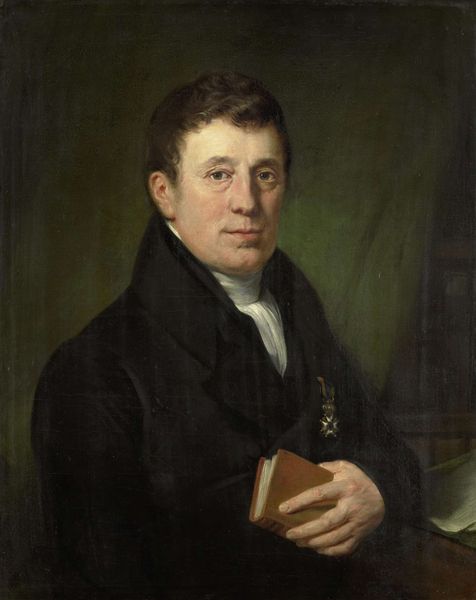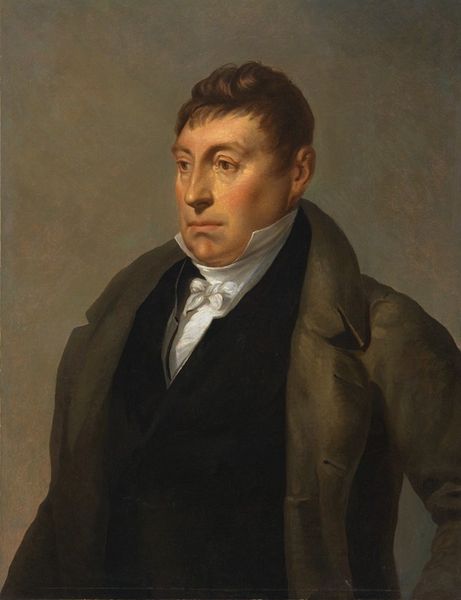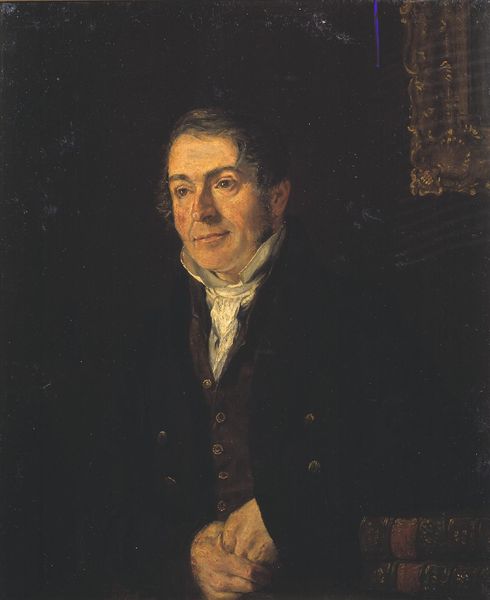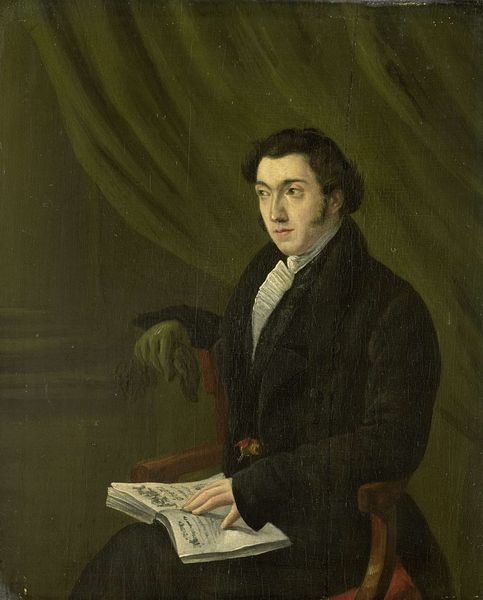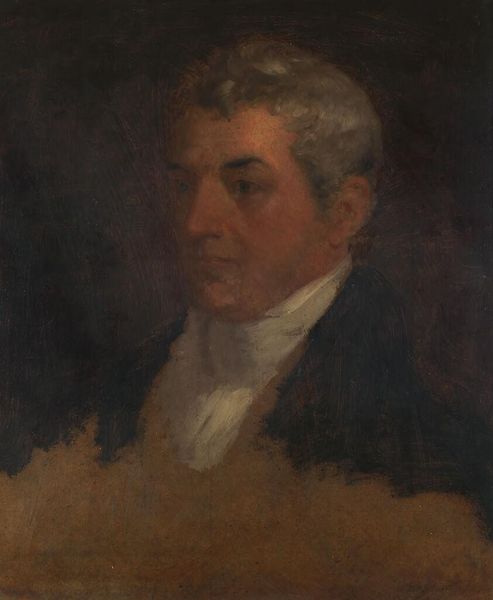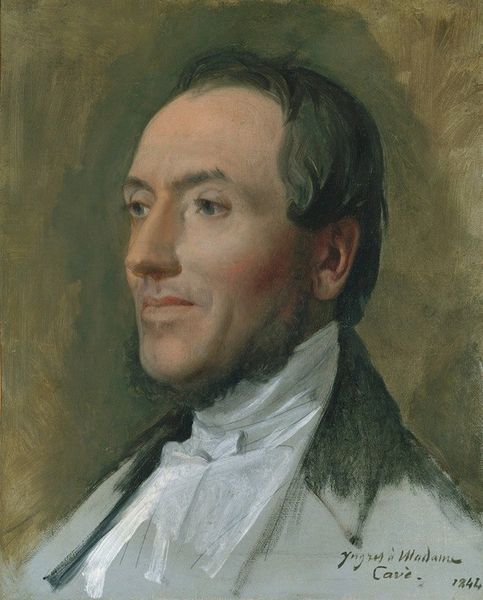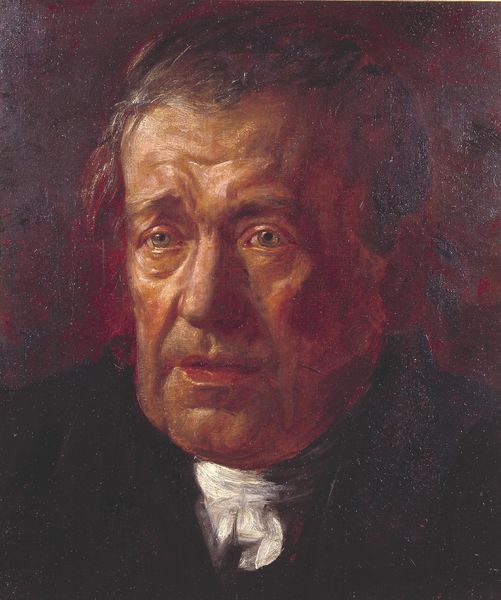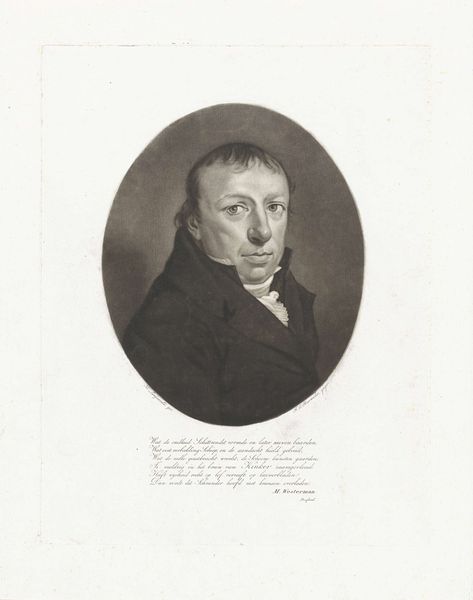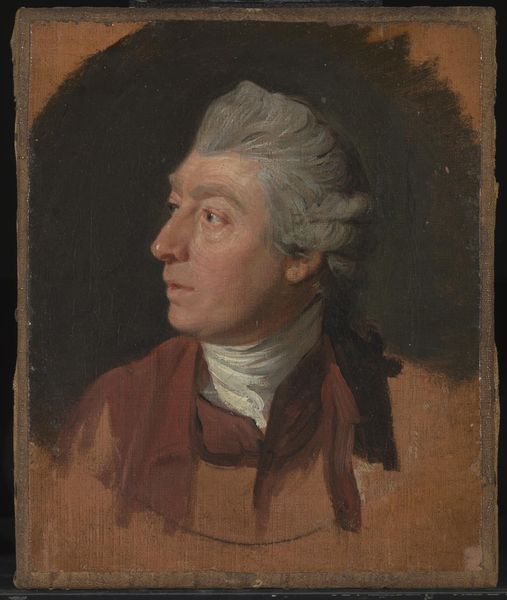
painting, oil-paint
#
portrait
#
neoclacissism
#
painting
#
oil-paint
#
portrait reference
#
portrait head and shoulder
#
romanticism
#
portrait drawing
#
history-painting
#
facial portrait
#
academic-art
#
portrait art
#
fine art portrait
#
celebrity portrait
Copyright: Public domain
Curator: Standing before us is Samuel Morse’s “Marquis De Lafayette,” painted in 1825. It resides here at the Crystal Bridges Museum. Editor: Wow, he looks so…contemplative. Maybe a bit skeptical even. There's a stiffness about him, a real formality. And that cloak—dramatic much? It makes him seem kind of…important, I guess is the word. Curator: Indeed. Notice how Morse employs neoclassical elements within the framework of Romanticism, especially in the calculated composition and the emphasis on depicting Lafayette as a figure of historical significance. Consider the implied circular frame, containing the figure and softening the potentially stark geometry. Editor: Right. It's all very official. Still, there’s a certain raw quality in those unfinished edges around the base, like Morse suddenly abandoned the task. It makes you think about the act of painting itself, doesn’t it? The real versus the ideal. The portrait has a life. Curator: Precisely. The textures visible there introduce a layer of complexity, resisting complete illusionism and acknowledging the material reality of the oil paint itself. Furthermore, observe the carefully modulated lighting, highlighting Lafayette’s features and imbuing him with a sense of gravity appropriate for a Revolutionary War hero. Editor: That light almost seems to carve him out of the shadows. It’s powerful, I feel almost dwarfed looking at this guy’s legacy. The colors, while subdued, give the painting such depth. It makes him almost super real. Curator: It’s fascinating how Morse, even within the constraints of portraiture, used formal devices to negotiate historical representation and individual character. This combination captures both the symbolic and the palpable dimensions of the sitter. Editor: Yeah, seeing this up close is so different than I imagined. It has the vibe of something grand that I don’t need to fully grasp. Curator: The encounter reminds us of how portraits work as material objects, laden with meanings which exceed their superficial appearances. Editor: Right, not just a pretty face, but history made present in a frame, kinda cool, right?
Comments
No comments
Be the first to comment and join the conversation on the ultimate creative platform.

